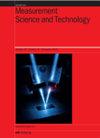专为船舶导航设计的基于 MCKF 的级联矢量跟踪方法
IF 3.4
3区 工程技术
Q1 ENGINEERING, MULTIDISCIPLINARY
引用次数: 0
摘要
在船舶导航方面,最广泛使用的技术是全球导航卫星系统(GNSS),该系统可在一段时间内连续提供船舶的位置和速度。然而,当船舶被港口建筑物或桥梁遮挡时,船载全球导航卫星系统接收器接收到的信号质量可能会降低,从而导致船舶定位不准确,给航行安全带来风险。在遮挡环境中,船载 GNSS 接收器信号处理期间的测量过程是非稳态的,容易出现测量异常,从而使测量噪声受到异常值的污染。为解决这一问题,设计了一个级联非相干矢量跟踪环路(VTL),并将最大熵卡尔曼滤波器(MCKF)作为船载 GNSS 接收器的级联载波/编码预滤波器。预滤波器的测量噪声协方差矩阵分别利用载噪比(CNR)和最大熵准则进行自适应计算和校正。与传统跟踪方法相比,所提出的算法对异常值更加敏感,能有效解决测量异常情况下的状态估计问题。具体来说,与传统的跟踪方法相比,该算法在静态和动态条件下都能为舰船提供更精确的位置和速度估计,以及更低的信号跟踪误差。在动态条件下的闭塞环境中,水平定位误差提高了 88.4%,水平速度误差降低了 62.1%。本文章由计算机程序翻译,如有差异,请以英文原文为准。
A MCKF-based Cascade Vector Tracking Method Designed for Ship Navigation
In ship navigation, the most widely used technology is Global Navigation Satellite Systems (GNSS), which provide the ship’s position and velocity continuously over a period of time. However, when ships are blocked by port buildings or bridges, the quality of signals received from shipborne GNSS receivers may be reduced, resulting in inaccurate ship positioning that poses a risk to navigational safety. In an occluded environment, the measurement process during the signal processing of shipborne GNSS receivers is nonstationary and prone to measurement anomalies, which can contaminate measurement noise with outliers. To address this problem, a cascaded non-coherent vector tracking loop (VTL) is designed, with the Maximum correntropy Kalman filter (MCKF) serving as a cascaded carrier/code pre-filter for shipborne GNSS receivers. The measurement noise covariance matrix of the pre-filter is adaptively calculated and corrected using the carrier-to-noise ratio (CNR) and the maximum correntropy criterion, respectively. The algorithm proposed is more sensitive to outliers than the traditional tracking methods and can effectively solve the state estimation problem under the condition of measurement anomalies. Specifically, the algorithm offers ships with more precise position and velocity estimations and lower signal tracking errors than traditional tracking methods under both static and dynamic conditions, as demonstrated by shipboard experiments. The horizontal positioning is increased by 88.4% and the horizontal velocity error is reduced by 62.1% in the occluded environment under dynamic conditions.
求助全文
通过发布文献求助,成功后即可免费获取论文全文。
去求助
来源期刊

Measurement Science and Technology
工程技术-工程:综合
CiteScore
4.30
自引率
16.70%
发文量
656
审稿时长
4.9 months
期刊介绍:
Measurement Science and Technology publishes articles on new measurement techniques and associated instrumentation. Papers that describe experiments must represent an advance in measurement science or measurement technique rather than the application of established experimental technique. Bearing in mind the multidisciplinary nature of the journal, authors must provide an introduction to their work that makes clear the novelty, significance, broader relevance of their work in a measurement context and relevance to the readership of Measurement Science and Technology. All submitted articles should contain consideration of the uncertainty, precision and/or accuracy of the measurements presented.
Subject coverage includes the theory, practice and application of measurement in physics, chemistry, engineering and the environmental and life sciences from inception to commercial exploitation. Publications in the journal should emphasize the novelty of reported methods, characterize them and demonstrate their performance using examples or applications.
 求助内容:
求助内容: 应助结果提醒方式:
应助结果提醒方式:


